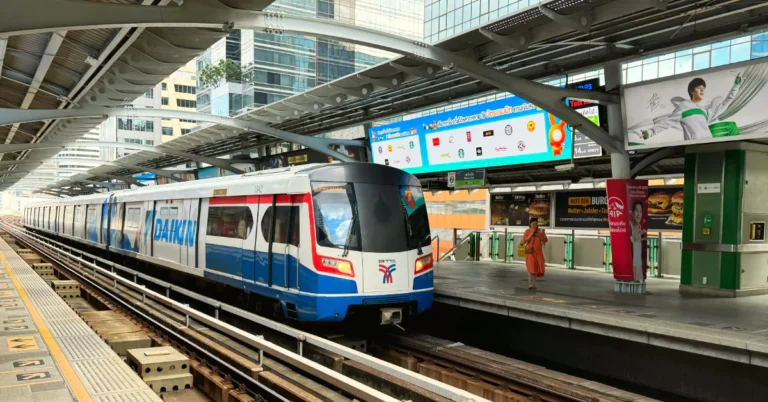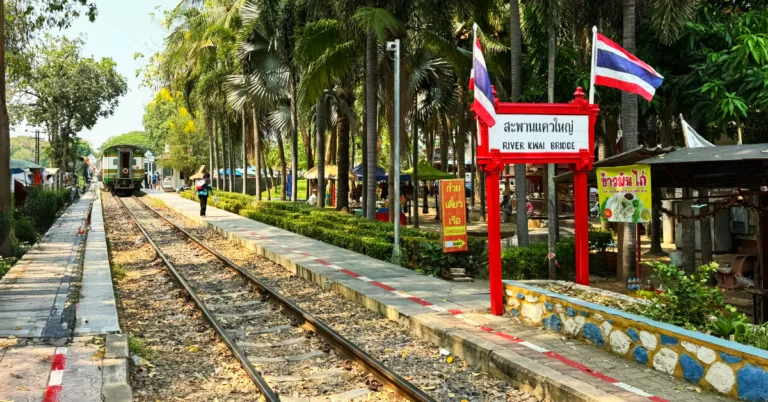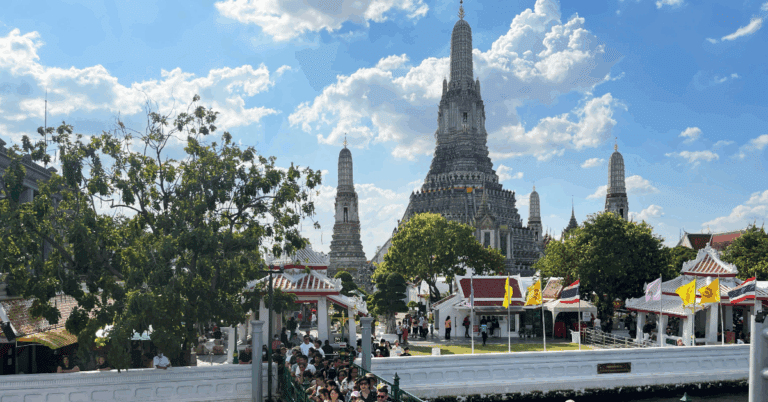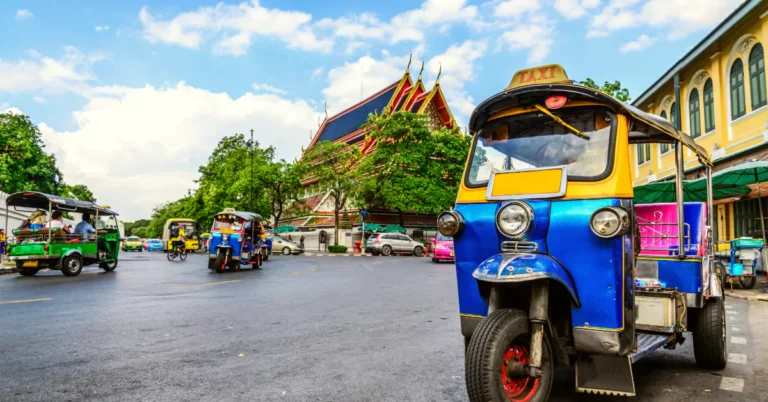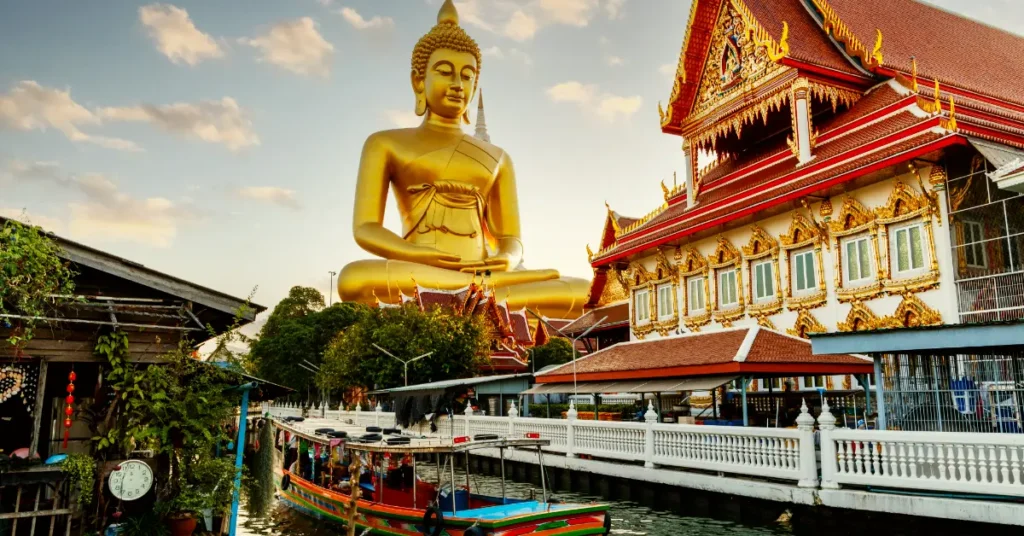
Plan your trip to Bangkok
If you’re planning a trip to Thailand, you’ll likely travel to Bangkok first. The city can feel a bit overwhelming at first so we present to you our: Bangkok Travel Tips and Arrival Guide. The tips in our guide are especially handy if you’re traveling to Bangkok for the first time, but could also help as a refresher if it’s been a while since your last visit. We’ll discuss all you need to know to get around, such as which apps to use to get around in Bangkok and where to stay. Get ready to explore one of our favorite cities in the world.
Topics
1. Do You Need a Visa to Enter Thailand?
2. Which Apps Make Life in Bangkok Easier?
3. How to Stay Connected: Sim Cards in Bangkok
4. How Much Cash Should You Carry in Thailand?
5. Getting from the Airport to the City
6. What’s the Best Area to Stay in Bangkok?
7. Top Tips for Navigating Bangkok Public Transport
8. Is Bangkok Safe for First-Time Travelers?
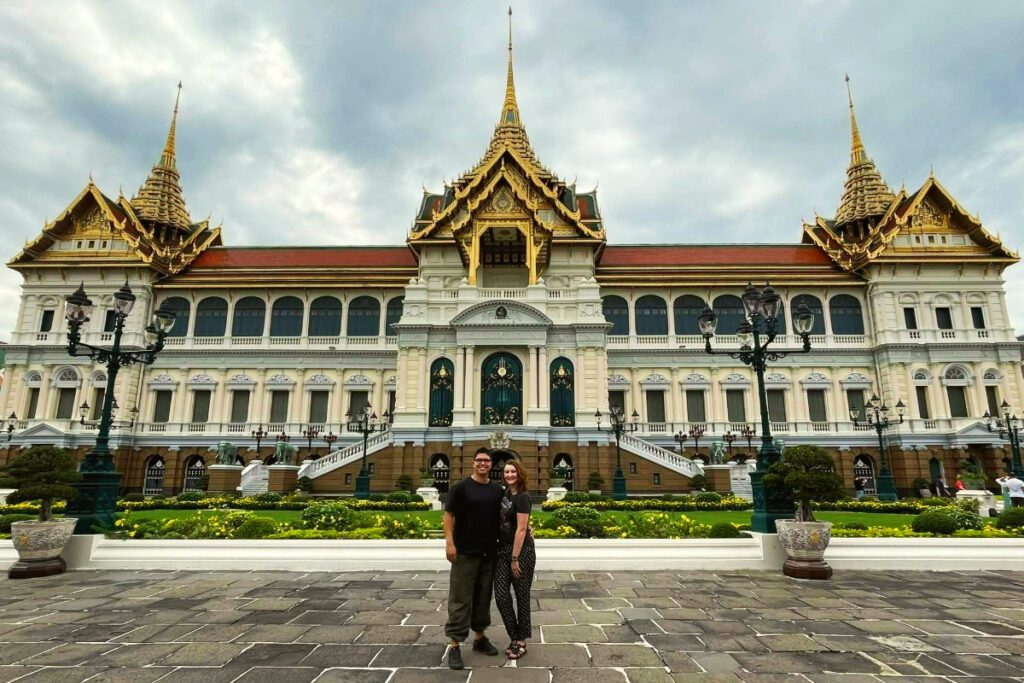
This post contains affiliate links. If you make a purchase through them we may earn a small commission at no extra cost to you.
1. Do You Need a Visa to Enter Bangkok, Thailand?
Currently Thailand offers a 60-day Tourist Visa exemption to many countries. There’s no need to do anything, but to arrive and have a ticket arranged out of out of Thailand within these 60 days. You should also be able to show you have sufficient funds to travel the country and preferably have accommodation arranged. For countries that don’t fall under the visa exemption rules, you can usually buy a visa on arrival. The official Thai E-visa website has an easy tool where you can check if you need a visa to enter the country.
“Effective Date 15 July 2024 Thailand offers a New Tourist Visa Exemption Scheme for 60 Days. This is valid for 93 countries and territories”
Pro Tip: Want to stay in Thailand longer? Start with the visa exemption. You can always extend it later at an immigration office for a one time extra 30-day stay. You do need an outbound ticket within the initial 60-days upon arrival in the country, so prepare accordingly.
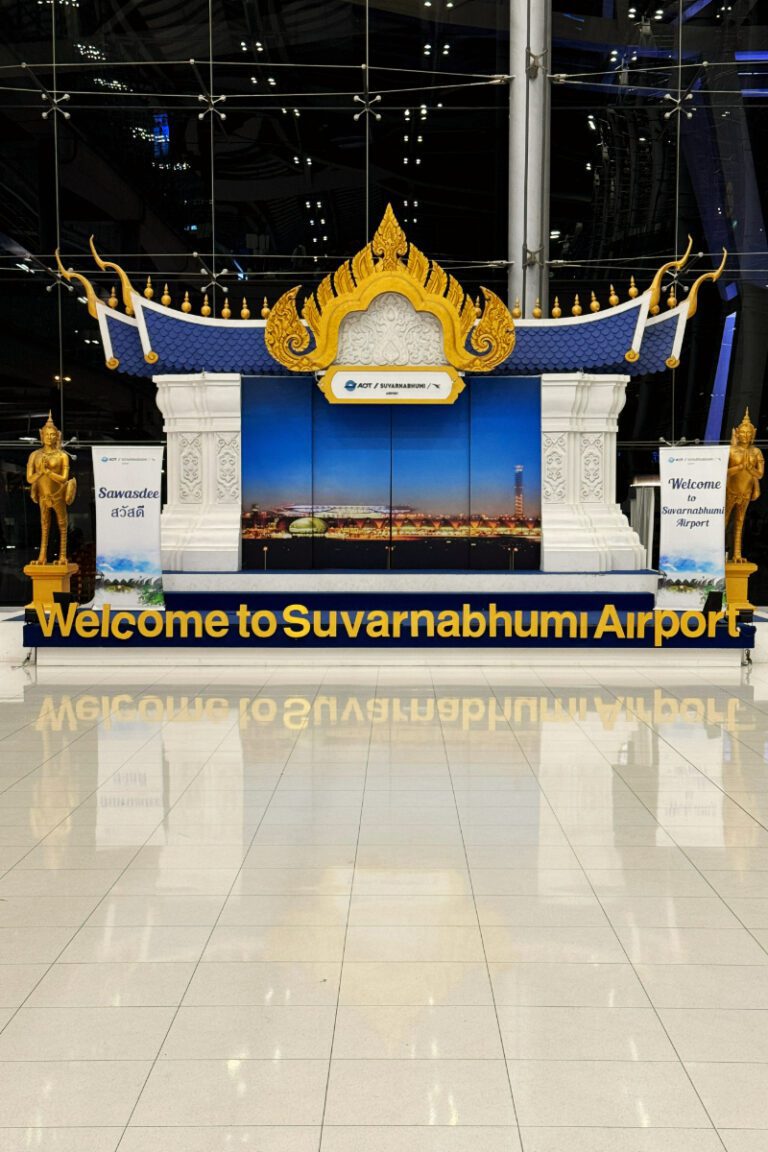
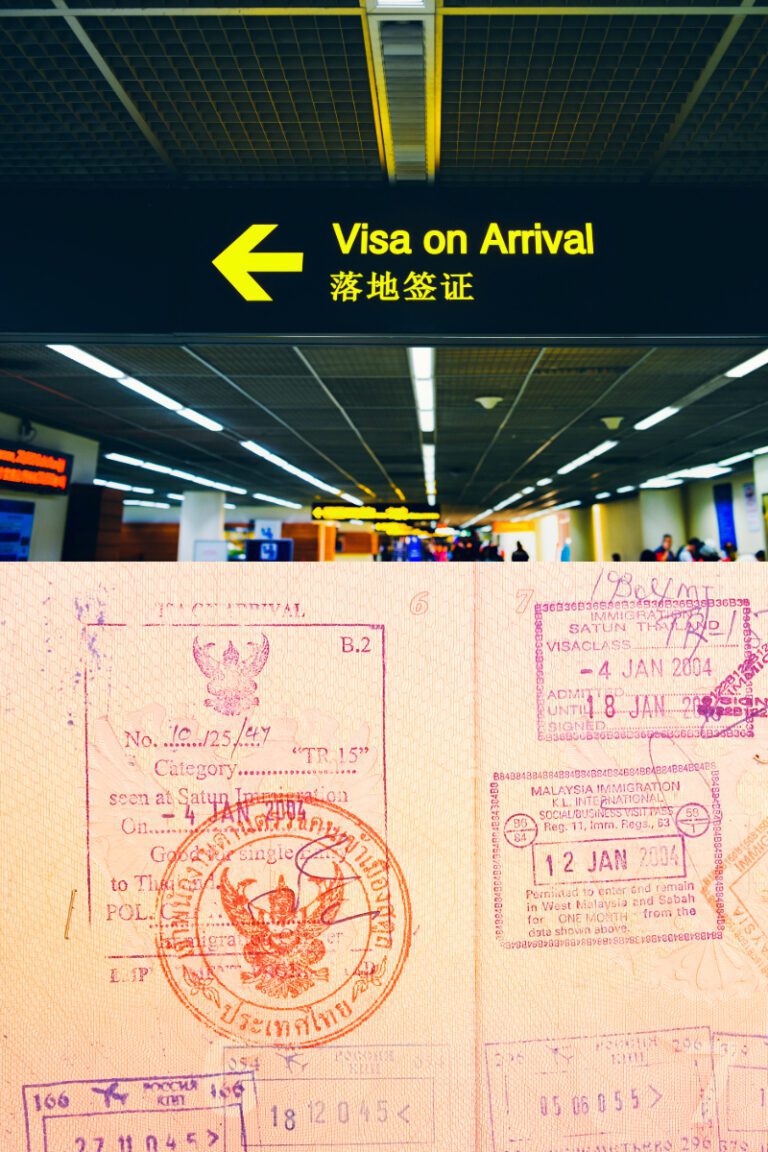
2. Which Apps Make Travel in Bangkok Easier?
Navigating travel in Bangkok is way simpler when you have this basic selection of apps installed:
Grab: This app is your lifesaver for taxis, food, and groceries. It’s cashless, reliable, and available in English.
Bolt & Indrive : Even cheaper ride-share app, but with less options available and in major cities only
Google Maps: A must for finding your way around Bangkok’s chaotic streets and public transport systems.
Google Translate & Google Lens: Translate Thai menus, signs, and even conversations with your smartphone.
Line: The WhatsApp of Thailand! Use it to communicate with locals and follow businesses for deals and updates.
Pro Tip: Install these apps before you arrive, so you’re ready to go. Grab also works at the airport, so you can order a ride as soon as you land.
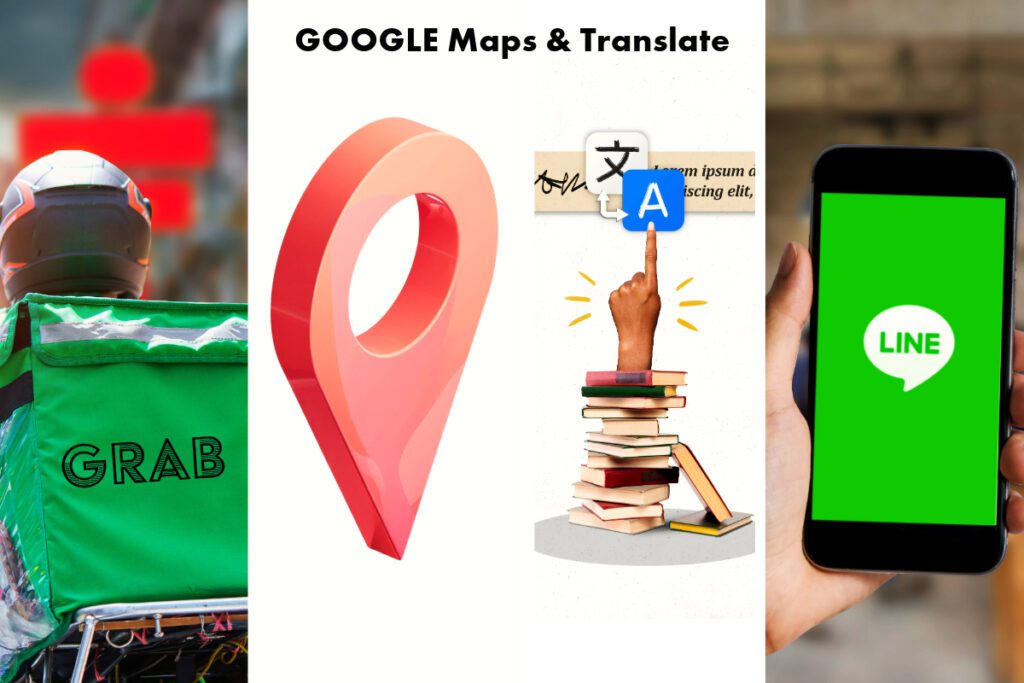
3. How to Stay Connected: Sim Cards in Bangkok
Having internet access is essential if you want to travel to Bangkok and the rest of Thailand. So getting a Sim Card upon arrival in Bangkok is a top travel tip if you ask us.
Here are your options:
- Airport Sim Cards (easiest): Buy one at the arrivals hall. Providers like AIS, DTAC, and TrueMove offer pre-paid packages. A fast option if you want to be connected after landing but also the most expensive option!
- Telecom store (cheapest): Another option is to wait and go into the city to a telecom store. Most can help you install one on your phone and you can also choose a package. We recommend AIS, as they have the best coverage and the staff can help you in English. You can either go for a regular sim card or an e-sim. Most modern phones can have E-sims and this means you can keep your old sim next to your new one.
- 7-Eleven Sim Cards (best-available): Budget-friendly and available in most convenience stores. Sadly not all providers offer great coverage outside major cities.
- E-sim (most convenient): In most country you can also get an e-sim. We’ve used the Airalo app and bought and installed an e-sim before we arrived. We enabled the sim upon landing and voilà we were connected to the internet right away. It’s slightly more expensive than a local sim and it usually doesn’t allow for any calls. In terms of convenience this has our preference.
Bonus tip: Be sure to check if you’re phone allows e-sims to be installed as not all phones do.
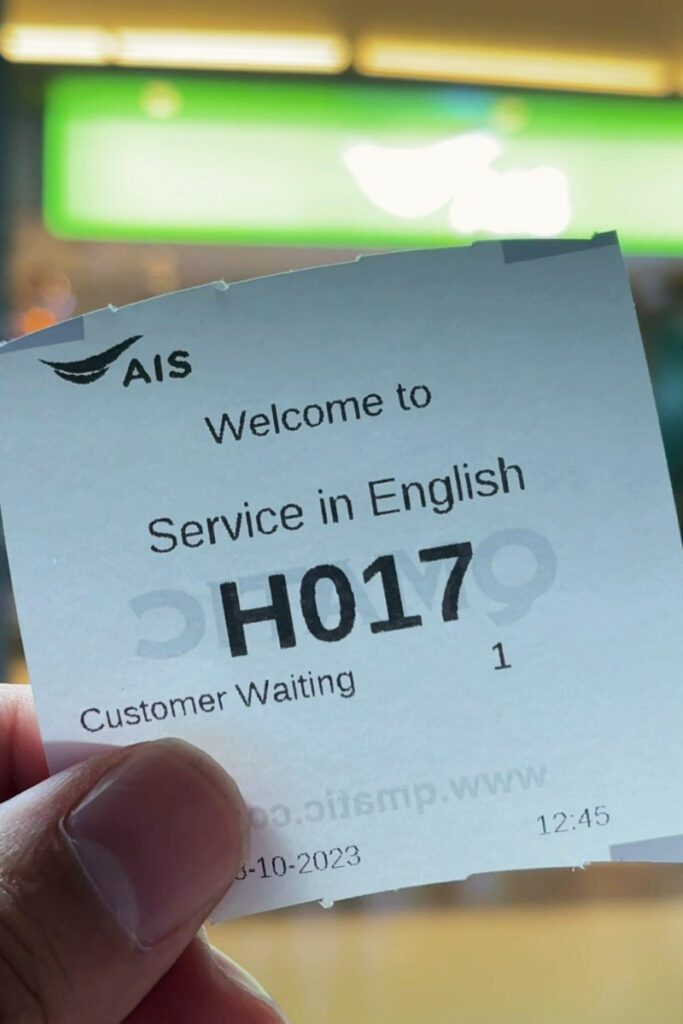
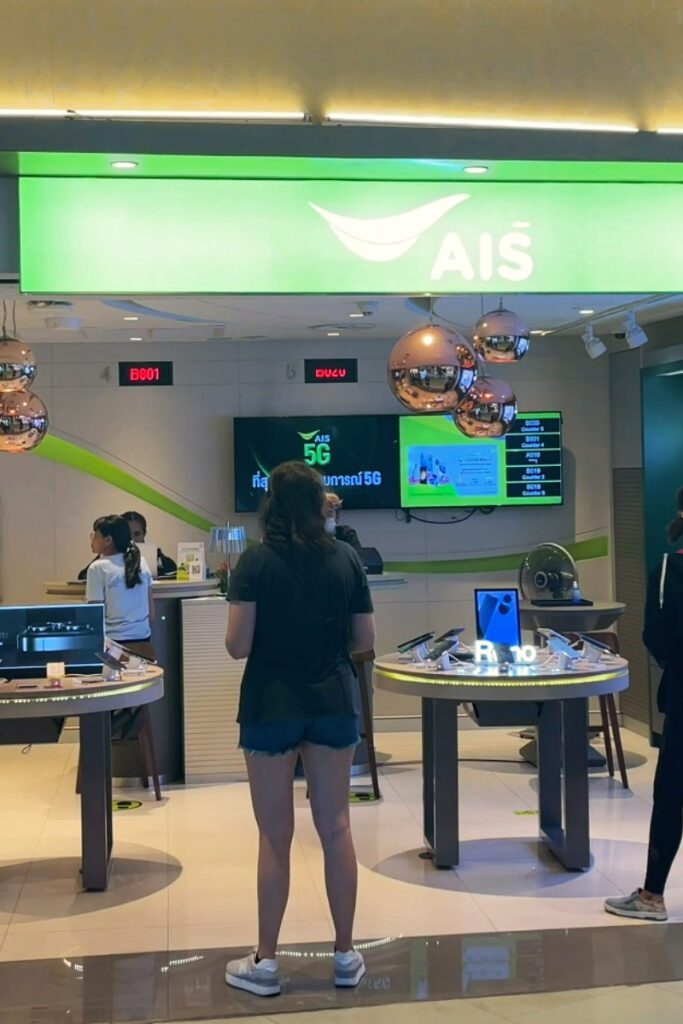
4. How Much Cash Should You Carry in Thailand?
Thailand is still very much a cash country, especially for local food stalls and markets. Cards are becoming more widely accepted in malls and bigger restaurants though. Still we advise to have sufficient cash on you for small purchases and independent restaurants.
Here’s what you need to know:
- Exchanging Money: Avoid airport exchange counters (except in the basement, where rates are better). Exchange your money in the city for the best deals at places like SuperRich. Exchange offices reject ripped, worn-out foreign bills or dirty ones, so bring clean notes that you want exchanged.
- ATMs: Withdrawing money is easy and safe, but each withdrawal comes with a 220 Baht fee per transaction. Always continue the transaction in Thai Baht and NEVER accept the ATM conversion rates to your home currency.
Pro Tip: Set-up a Wise or Revolut before you leave. They offer a free bank account and with their card you can withdraw up to (EUR 200 / USD 200 / GBP 200) baht per month without any additional home bank fees.
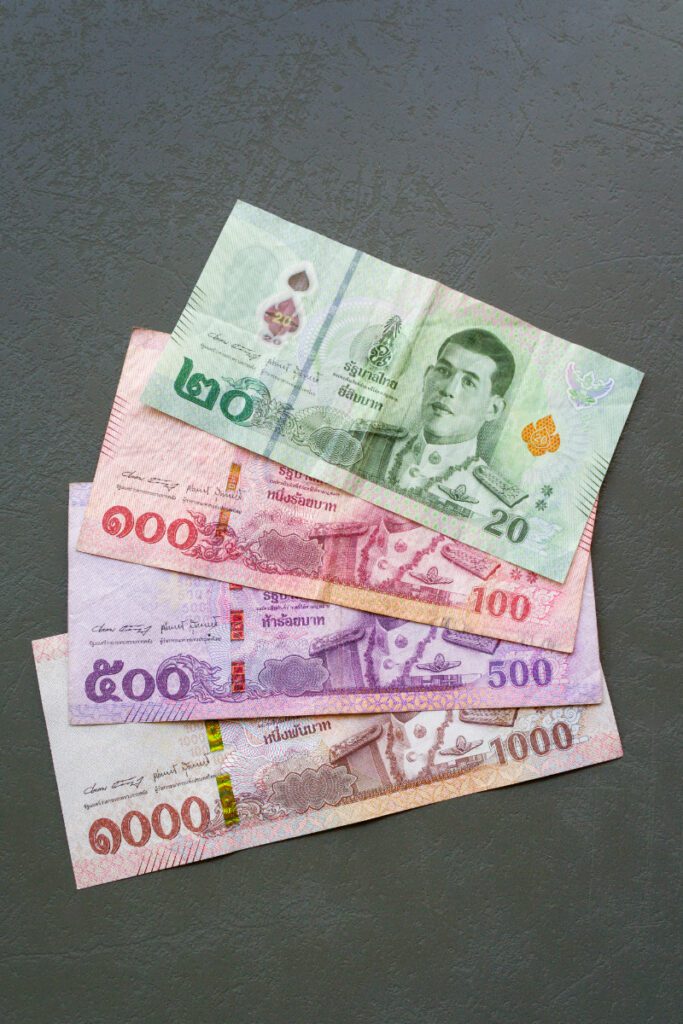
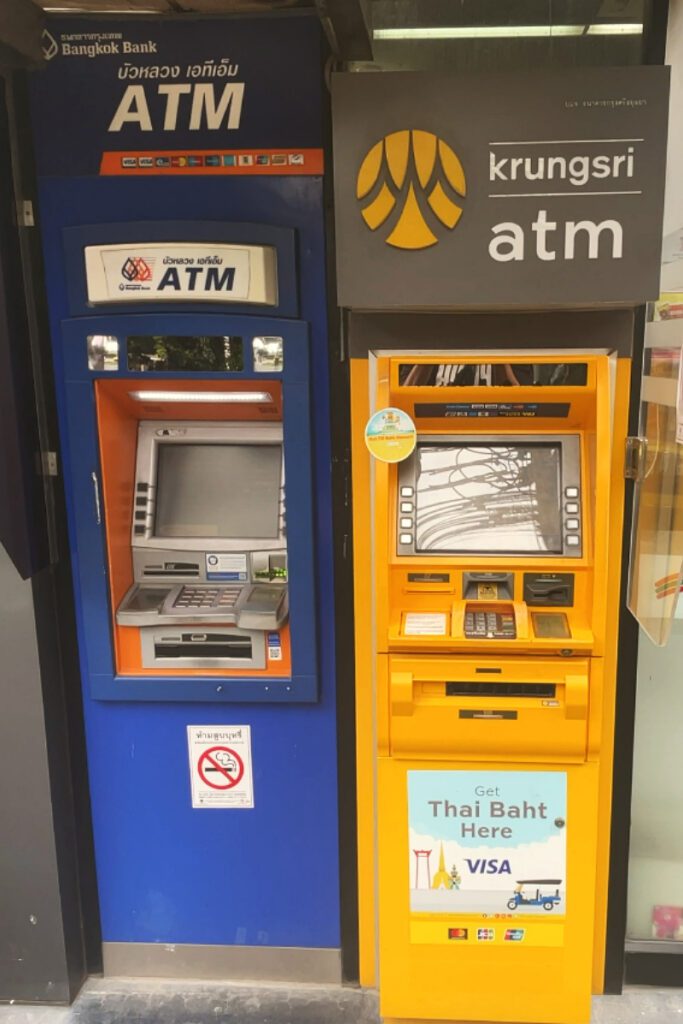
5. Getting from the Airport to the City
After arriving at Bangkok International Airport (BKK), there are a few options to get you into the city.
Grab Taxi (ride share app)
- Reliable and cashless. Costs 400-600 Baht, plus an optional toll fee of 25-70 Baht.
- Use airport Wi-Fi or your e-sim to book your ride.
- Go to Exit Gate 4 and find the Grab service center for the pick-up spot
- Waiting times can be long if it’s busy
- Affordable option, costs range from 35 – 45 Thai Baht.
- Connects to BTS and MRT for on-ward travel.
- Best if you’re staying near public transport and traveling light.
- Fastest way into the city, especially during rush hour.
- Might need to continue by taxi if hotel isn’t close to public transport.
- Driver will wait for you with sign at arrivals
- Comfortable cars
- More expensive than regular taxi, but no waiting involved
- Driver will wait up to 2 hours if delayed
Regular Taxis
- Grab a ticket at the taxi stand and wait for your number to be called
- Metered taxis are available but can be hit-or-miss.
- Ensure the driver uses the meter to avoid being overcharged and agree to the full price beforehand.
- Cash is needed to pay for the ride.
6. What’s the Best Area to Stay in Bangkok?
Picking the right neighborhood can make or break your first Bangkok trip. Here are the best areas to stay plus recommend hotels for each area.
- Asok: Great for nightlife, shopping, and restaurants. Some might even say the most popular area of Bangkok. We stayed at the Novotel Sukhumvit 20 and definitely recommend it.
- Old Town (Phra Nakhon): Close to landmarks like the Grand Palace and Wat Pho. This is perfect if you want to be right in the cultural heart of Bangkok. In old town we recommend to stay at the Chillax Heritage Hotel.
- Silom: A mix of business and leisure, with a vibrant food scene and easy connections with BTS and MRT. In Silom we had a good time staying at the Ibis Styles Silom
Phrom Phong/Thong Lor: Known for some of the best malls, lots of bars and Japanese restaurants. For this particular area we recommend to stay at the Staybridge Suites Thonglor.
Pro Tip: Stay near a BTS or MRT station for easy access to the city’s highlights. Bangkok traffic can be brutal, so avoid hotels in remote locations unless you’re planning to relax at the hotel.
7. Top Tips for Navigating Bangkok Public Transport
Bangkok’s public transport system is efficient but can be confusing for first-timers. Here’s what you need to know:
- BTS Skytrain: The fastest way above ground to get around the city. Ideal for avoiding traffic jams.
- MRT Subway: Underground lines that are perfect for reaching markets and cultural sites.
- Buses: Cheap but hard to navigate without knowing Thai.
- Tuk-Tuks: Fun but overpriced for tourists. Always negotiate the fare before hopping in!
Pro Tip: Use Google Maps to plan your routes on BTS and MRT. It’s accurate and helps you navigate step by step and even times of departure.
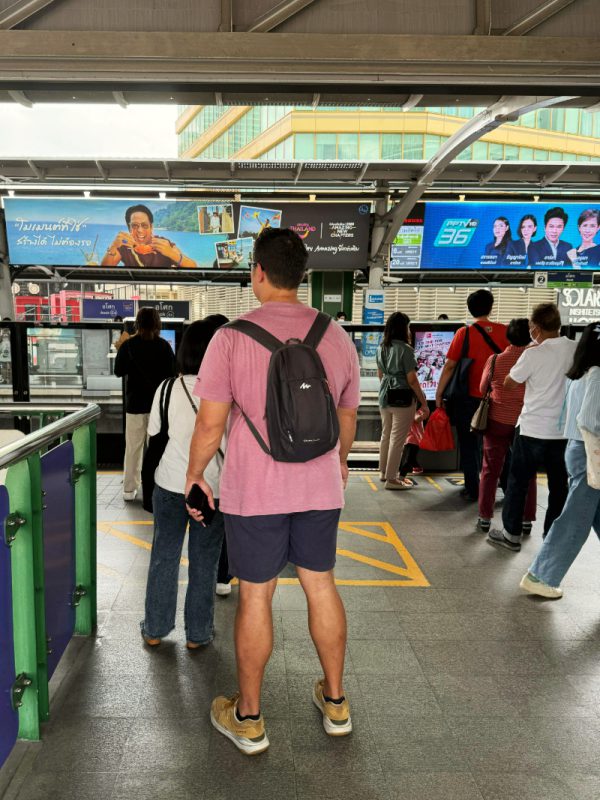
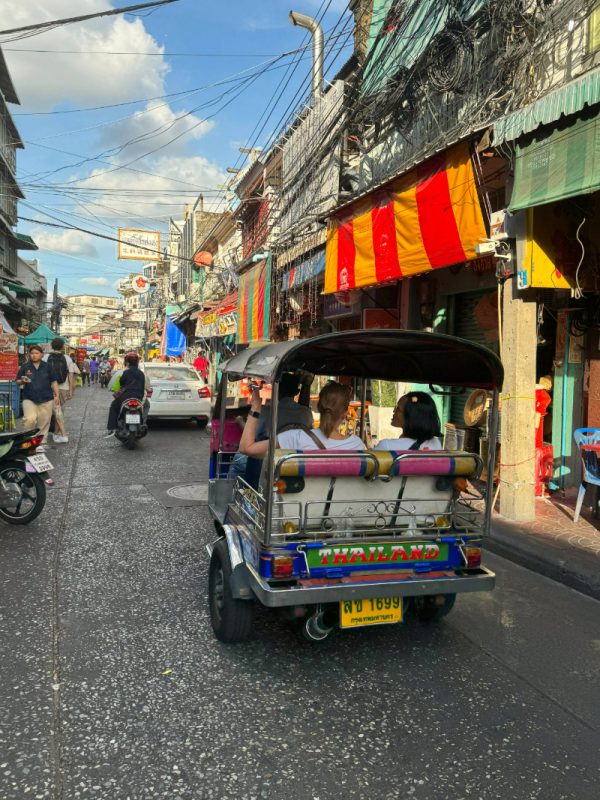
8. Safety in Bangkok
Bangkok is generally very safe for tourists, but like any big city, it’s good to stay cautious. Here are a few tips:
- Always keep an eye on your belongings in crowded areas.
- Use ride-share apps instead of hailing random taxis at night.
- Avoid overly friendly strangers offering unsolicited help or asking questions… it’s often a scam.
- Eating food in the street is generally safe but always check the chef and its food before eating. As a generally rule, do as the locals do and eat at stalls where it’s busy.
Pro Tip: Stick to busy, well-lit areas and don’t hesitate to ask hotel staff for advice. They are usually a great resource for trustworthy recommendations.
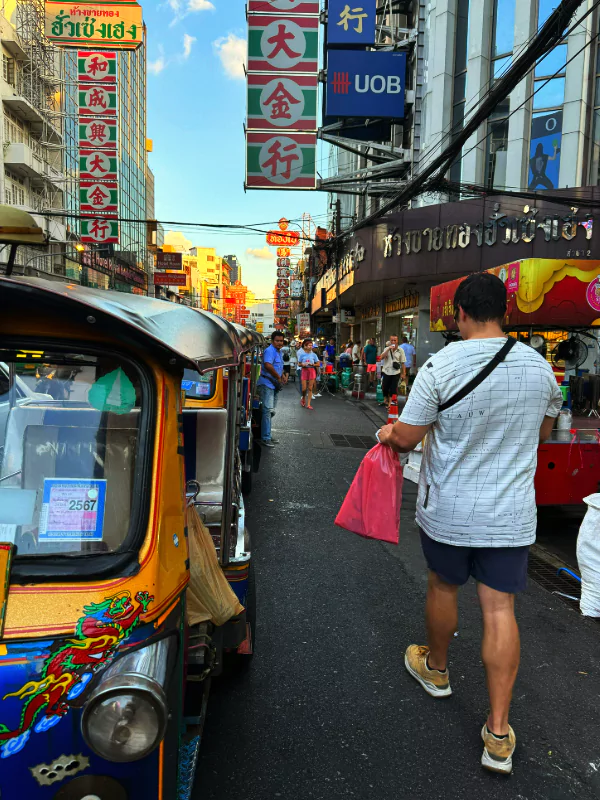
9. How to Handle the Weather in Bangkok
Bangkok is hot and humid year round, with occasional rain showers. Here’s how to prepare:
- Wear light, breathable clothing.
- Always carry a small umbrella or raincoat during rainy season.
- Sunscreen every day because the sun is HOT and intense.
- Stay hydrated, bottled water is cheap and available everywhere.
Pro Tip: Plan outdoor activities in the early morning or late afternoon to avoid the midday heat. Bangkok temples and markets are more enjoyable without the blazing sun.
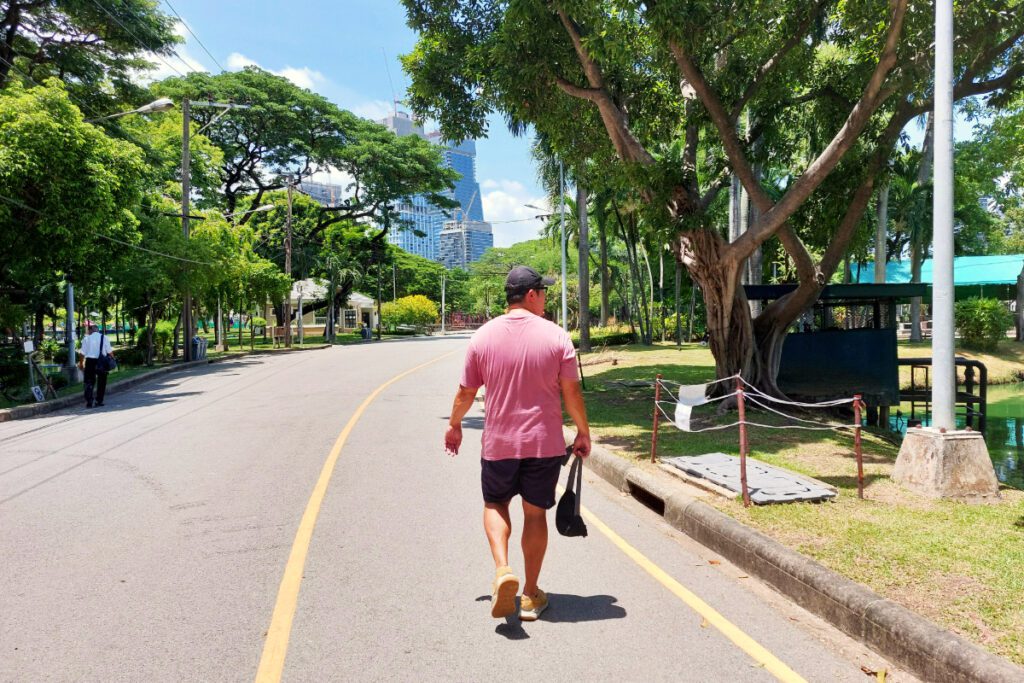
10. Must-Try Foods for First-Timers in Bangkok
Bangkok is truly a flavor town. There are so many must-try foods and you can generally eat safely from one of the many food stalls or at one of the mall food courts. BUT be prepared for some spicy food!
So don’t travel to Bangkok without trying these famous dishes:
- Pad Thai: A classic stir-fried noodle dish usually with shrimps.
- Tom Yum Goong: A spicy and sour shrimp soup.
- Mango Sticky Rice: The perfect sweet treat with Mango, rice and coconut milk.
- Boat Noodles: A bowl of flavor packed noodle soup filled with a mix of meats.
- Khao Soi: A Northern style savoury thai egg noodle soup usually with chicken.
- Pad Krapow: Stir fried meat with holy basil and rice.
Pro Tip: Look for Street food stalls with a crowd, those are your best bet for authentic flavors and high turn around means safer to eat.
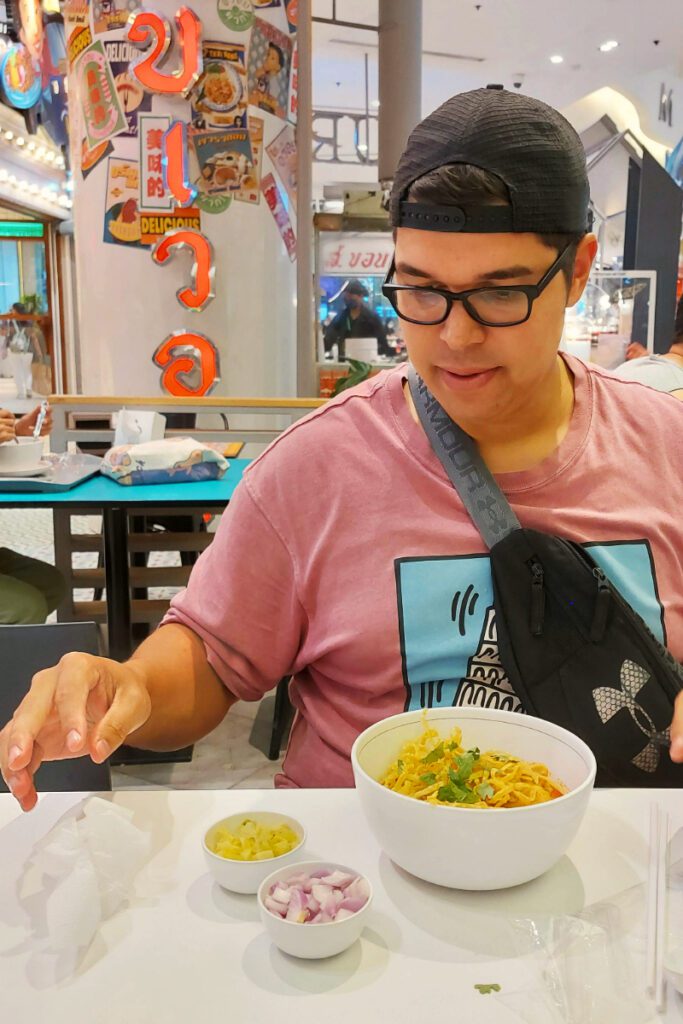
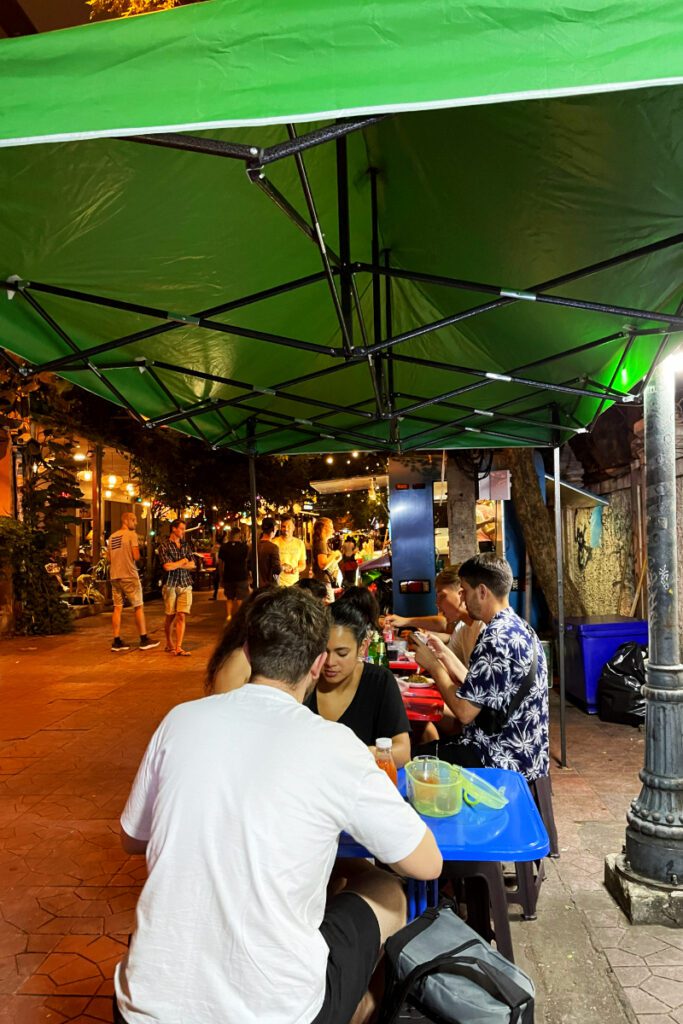
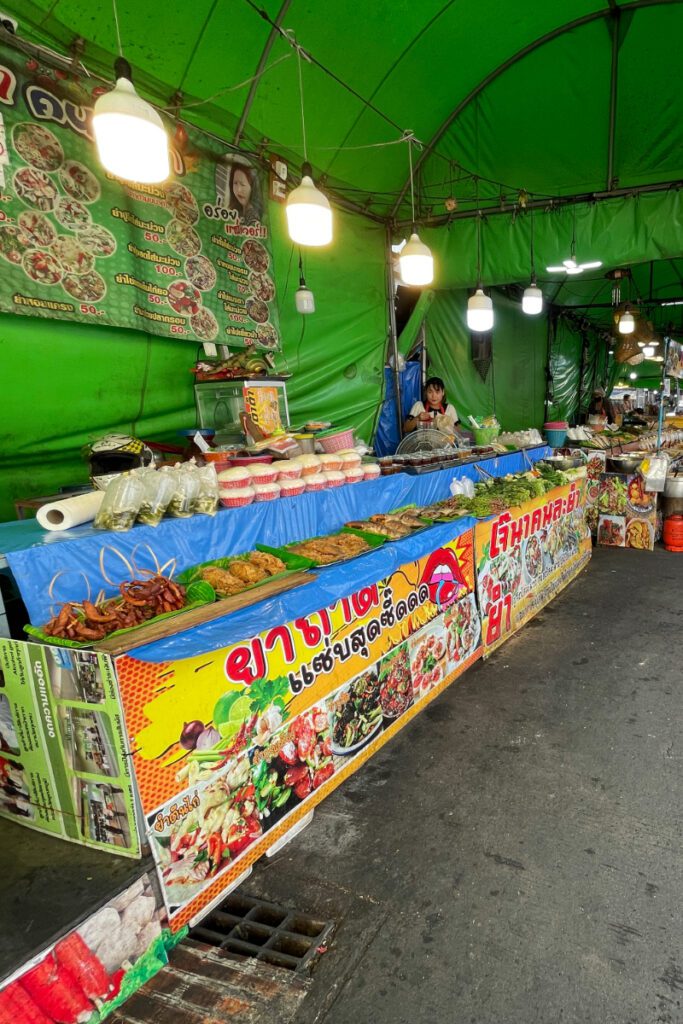
Ready to Explore Bangkok?
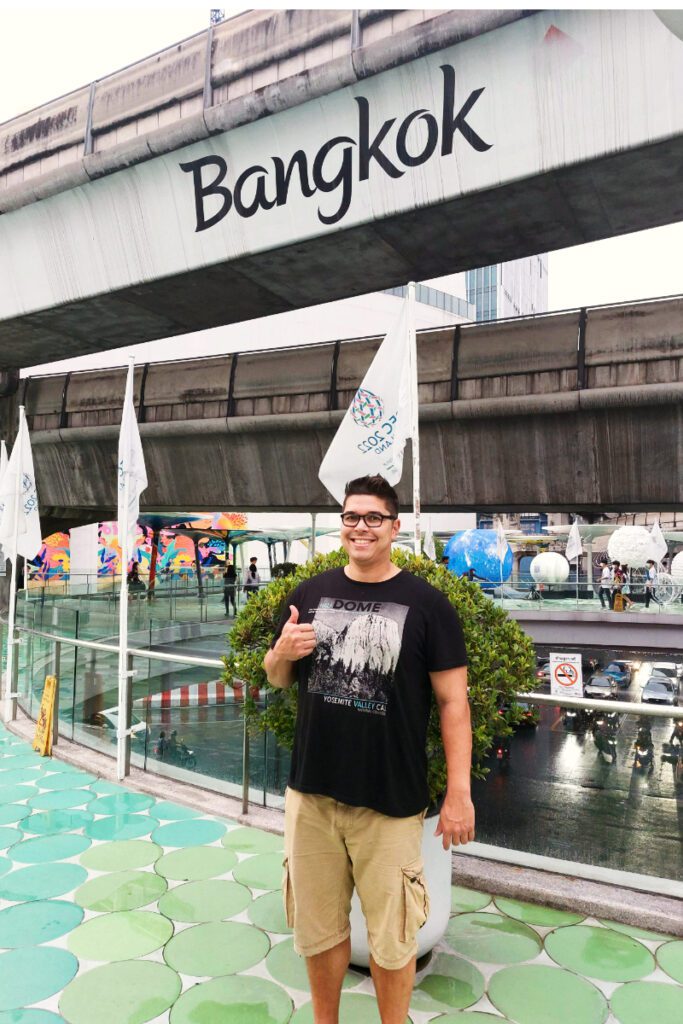
With this guide, you’re all set make the most out of your travel to to Bangkok. From visas to transportation, apps, and food, you can now navigate the city of angels like a pro.
If you’re looking for more travel tips and recommendations, check out our Youtube Channel @YesandExplore
Thank you for reading and we wish you safe Bangkok Travels!
– Laurens & Laura
p.s. If you only have 24 hours in this amazing city, check-out our perfect 1-day Bangkok itinerary
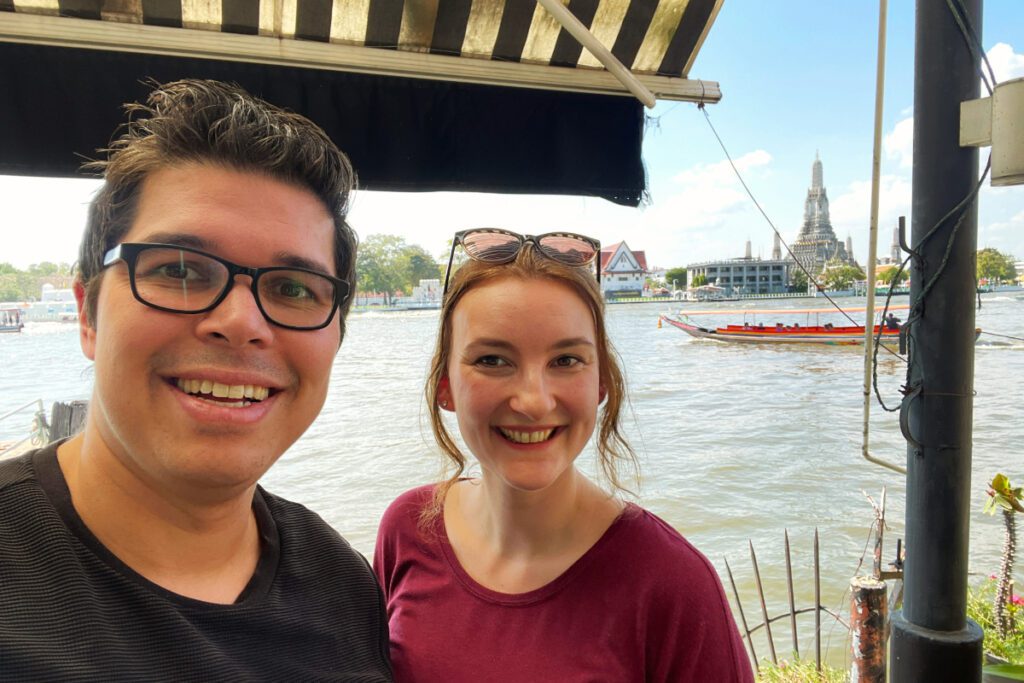

Laurens is the co-founder of Yes and Explore, with a background in sports, theater, and bringing people together. He’s happiest when traveling, tasting his way through local dishes, and sharing stories that inspire your next travel adventure.

